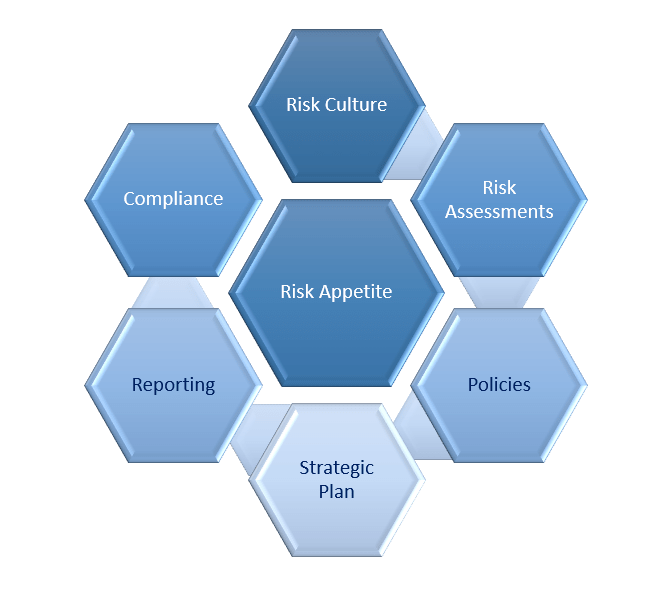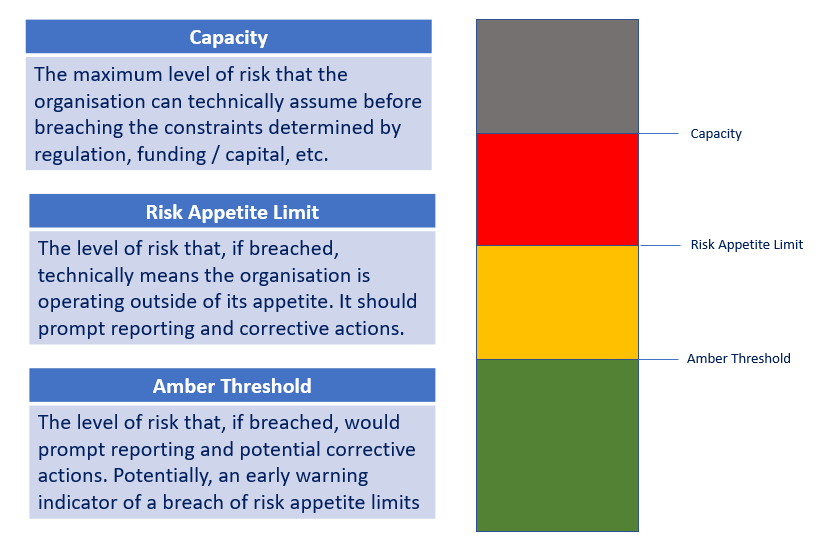Ready to elevate your GRC platform?
Schedule a 30-minute platform walk-through with our expert team.
Create effective risk appetite frameworks by linking qualitative statements and quantitative metrics to your strategic plan, risk categories, and overall governance structure.
Let’s begin with a definition of Risk Appetite. ISO 31000 (the international risk management standard) defines risk appetite as “the amount and type of risk that an organisation is prepared to pursue, retain or take”. Adding to this, we could say that risk appetite is the amount and type of risk that we’re willing to accept / take in order to achieve our objectives.
Risk Appetite is a fundamental component of any organisation’s risk management framework. The diagram below shows an example of components which may be in your risk management framework.

What should my Risk Appetite look like?
Risk Appetite is commonly expressed as a series of qualitative Risk Appetite Statements and associated Risk Appetite Metrics (often referred to as Key Risk Indicators).
Risk Appetite Statements should be:
Risk Appetite Metrics (or KRIs) should:

An Example:
An organisation might have a risk appetite statement that states “we will only offer products / services that satisfy the needs of our customers / members / service users. All of our product / service offerings must also be compliant with all relevant regulation and legislation.”
The associated metrics might look something like the following:
Conclusion:
When considering risk appetite, it is important to link it back to the regulatory environment in which your organisation must operate, to your strategic plan, and to your organisation’s risk management capability. This is the ability to manage risk exposures within your desired limits (metrics) and can include available skills and knowledge in the organisation, the controls you have in place, risk culture in the organisation and much more.
When establishing or updating your risk appetite statements and associated metrics, you should consider the appropriate governance forum at which this should be done – e.g., consider getting your board of directors involved in the process.
Finally, you should review your risk appetite on at least an annual basis.
More information
Click here to request a demo to learn more about how CalQRisk can help you with the tracking and reporting of your risk appetite and metrics.